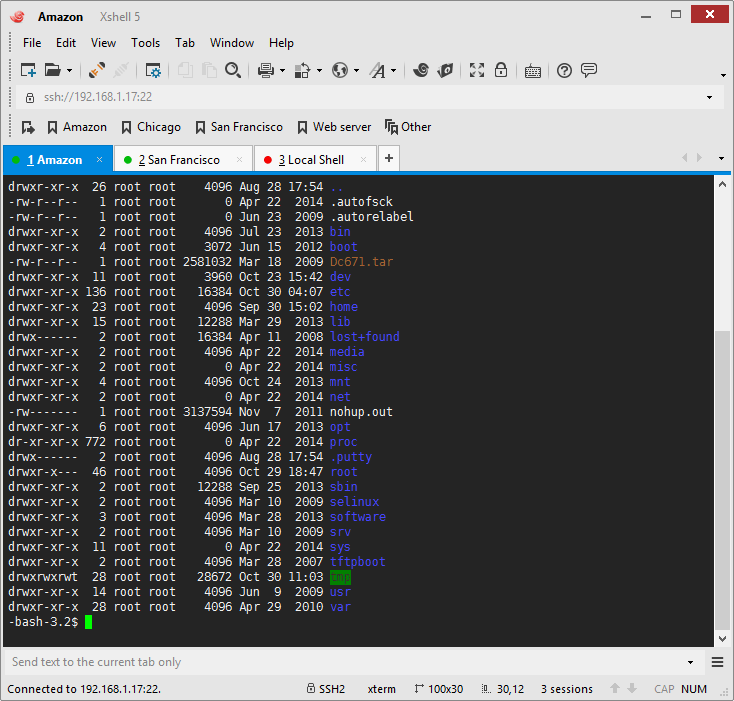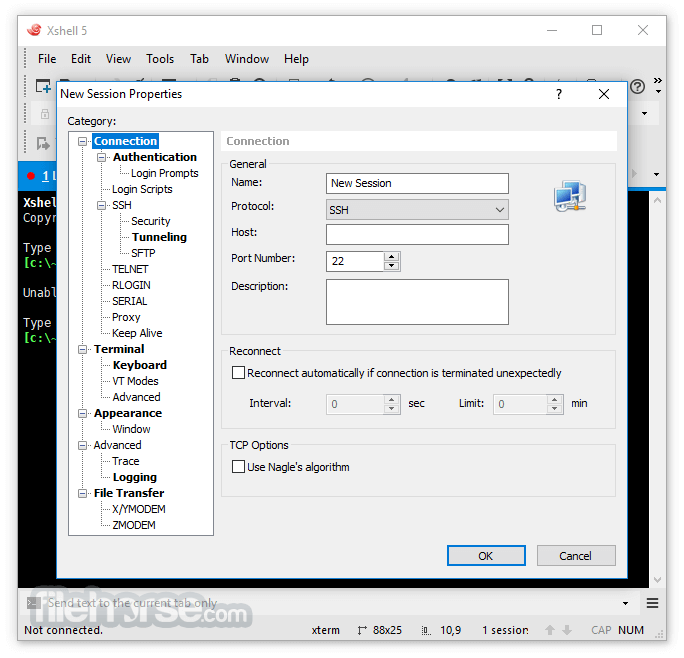
You would enable Select an alternate keyboard emulation in the Terminal / Emulation category (Session Options/Default session) and set the dropdown to Custom and then use the '.' to browse to the. You do still configure that at the session level, so Default session still comes into play. That can be done from the Tools menu ( Export Settings), you would just specify an XML file where the info should be exported.Īdditionally an alternative to using the Mapped Keys category of Session Options is to create a. Since you would be making a change that affects many sessions, the recommendation is to export your config as a backup as a best practice.

This means that if the targeted field you want to apply to all other sessions is already set to the value you want, you must first change it to something different (and apply that "change") and then edit the Default session again to set the option to its desired value (and apply that "change"). Note: In order for a "change" to be applied to all other sessions, the Default session's option/field you're targeting must actually be modified/different from its current value. Here are some links to tips and a video that provide more details about using the Default session to make mass changes to multiple sessions: You can employ the power of editing the Default session to make this change to all of your existing and future sessions. shell -ci "!process 0 7" perl.exe parsemyoutput.As a note, you can make pretty much any "session level" change globally using Default session. For example, you could pass the output from the !process 0 7 command to a Perl script by using the following command: 0:000>. You can use the -ci flag to run one or more debugger commands and then pass their output to a shell process. This command cannot be used while debugging CSRSS, because new processes cannot be created without CSRSS being active. shell_quit command is more powerful, because it works even if the shell is frozen.) To close this shell and return to the debugger itself, type exit or. This window should be ignored all input and output will be done through the Debugger Command window. Sometimes, a separate Command Prompt window will appear when the debugger leaves the shell open. During this time, the debugger will display messages reading, and the WinDbg prompt will be replaced with an Input> prompt.
#Xshell commands windows
All subsequent commands will be interpreted as Windows commands. shell command with no parameters will activate the shell and leave it open. The output from the command will appear in the Debugger Command window, unless the -o **** OutFile parameter is used. shell and the ShellCommand (additional leading spaces are ignored). This line should not be enclosed in quotation marks. shell command will be interpreted as a Windows command (even if it contains a semicolon). For more information about redirecting output to the kernel debugger (sometimes called NTSD over KD), see Controlling the User-Mode Debugger from the Kernel Debugger. shell command is not supported when the output of a user-mode debugger is redirected to the kernel debugger. Environmentįor other ways of accessing the command shell, see Using Shell Commands. Specifies the application command line or Microsoft MS-DOS command to be executed. This allows you to create processes which will continue running even after the debugging session ends.

Commands can be any number of debugger commands, separated by semicolons, and enclosed in quotation marks.Ĭauses any process being spawned to be completely detached from the debugger. Processes the specified debugger commands, and then passes their output as an input file to the process being launched.

If you do not want this output displayed or saved in a file, you can specify a single hyphen (-) instead of ErrFile, with no space before the hyphen.Ĭan be any number of the following options: If -e ErrFile is omitted, error output is sent to the same place as standard output. Specifies the path and file name of a file to be used for error output. If you do not want this output displayed or saved in a file, you can specify a single hyphen (-) instead of OutFile, with no space before the hyphen. If -o **** OutFile is omitted, output is sent to the Debugger Command window. Specifies the path and file name of a file to be used for standard output. If you intend to offer no input after the initial command, you can specify a single hyphen (-) instead of InFile, with no space before the hyphen. Specifies the path and file name of a file to be used for input. shell command launches a shell process and redirects its output to the debugger, or to a specified file.shell


 0 kommentar(er)
0 kommentar(er)
